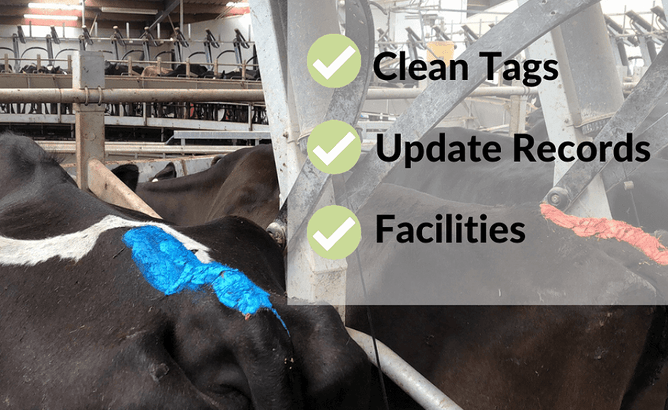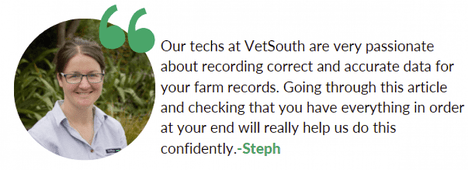Vet Claire and Tech Steph share their top tips for an easy scan.
There’s a lot going on when heifers and cows are getting scanned. Numbers are getting thrown around all over the show: tag numbers, mating dates, days pregnant, the time the alarm went off to get on-farm and so on. Here’s a list of things worth quickly thinking about before it’s your turn to scan. Anything that can help the scanning job go as smoothly as possible on the day, will help reduce the risk of scanning or recording errors, and most importantly, keep everyone’s smoko breaks on schedule!
Records
- Enter AI dates onto MINDA or CRV Insight (a week in advance as it can take a few days to synch)
- General tidy up of records. Remove dead cows from this season or culls etc.
- Newly purchased stock? Update NAIT transfers and add those animal records to your herd.
- Have carry over cows been inactivated in the herd records, but still have their original management tags in their ears? These cows are a common source of double up tag numbers.
Cows
- Identify and eliminate double-up tag numbers and replace any missing tags.
- If there’s no time to order new replacement tags (or you have a recidivist cow that always pulls out their tag), spray the tag number on the cows back or rump.
- Clean tags.
- Touch up handwritten tags or replace them with the real deal.
- EID reader on-farm? Preload your EID reader with your herd records the day before scanning, charge it up and have it on hand for scanning. It’s not efficient to use the EID reader to ID every cow, but it can save a lot of time for the hard to read tags. A wand can be very useful at heifer scanning too when their heads are stuck down low and usually on the wrong side of the race blocking their tags. For these, pre-load the wand with the 2019 born animal records.
- At re-check scan time, draft the cows a day in advance so there is a final chance/one more milking to find any missing cows.
- Consider bringing the lame herd in first so they don’t have to stand around waiting too long at the end.
Rotaries
- Check the platform start/stop mechanism is functioning.
- Check the correct bale is being read and matches where the vet stand will be placed for the scan.
- Ensure individual bale numbers are visible.
Herringbones
- Remove hazards from the pit. Some trolleys have small wheels and are not made for 'off-roading'.
- In most sheds, we can only scan down one side – swing the cups over or under the opposite side’s bum rail. Usually, we need to avoid the side with the jetters or where the milk can is a major obstruction.
- In roomy spacious sheds – choose the side most beneficial for reading the cows tags – space for a human to walk in front of their heads to read tags is very helpful.
We understand every shed is different but if you have any questions, sing out to your KeyVet.
- Claire Hunter


